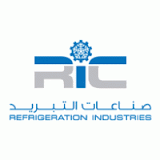Smart Thermostat Global Market Report 2022: Rise in Demand for Smart Buildings and Smart Cities Driving Growth - ResearchAndMarkets.com
The "Smart Thermostat Market - Forecasts from 2022 to 2027" report has been added to ResearchAndMarkets.com's offering.
The smart thermostat market is projected to witness a CAGR of 18.90% during the forecast period to grow from US$2.136 billion in 2020 to US$7.173 billion in 2027. They are part of another generation of home automation gadgets that are becoming increasingly popular in smart homes.
The advent of IoT-enabled HVAC systems, government requirements aimed at boosting building energy efficiency, and wide adoption of smart home voice assistants are all driving the smart thermostat market ahead.
Industries are rapidly adopting smart-thermostat technology. They may easily manage and regulate the HVAC system by adjusting to this technology. With wireless communication, the smart thermostat may be installed quickly. The rise of IoT services is driving the market for smart thermostats.
The number of people who keep an eye on appliances like air conditioners, heaters, and other gadgets is large. It is a critical market driver that accelerates the smart thermostat industry's growth pace. The need for automation devices is increasing as the rate of urbanization rises. AL capabilities are available in IoT devices, such as the smart thermostat. Users benefit from the thermostat devices' ease of use and energy-saving capabilities.
Furthermore, government attempts to reduce energy use are on the rise these days. Carbon emissions are reduced by using energy-efficient automation systems. In the coming years, it will raise awareness of smart-thermostat technology. As a result, many customers are aware that the thermostat device assists them in saving money on electricity. It is possible to operate the AC, tablets, cellphones, and other devices with single access control. The necessity for automation devices and the emission concept is the major market factor for the growth of this market.
Smart Thermostat Market Growth Factors
The Rise in Demand for Smart Buildings and Smart Cities
Society is becoming more urbanized, with a focus on smart cities, where linked technologies and Internet of Things (IoT) solutions are used to enhance critical infrastructure, public safety, city lighting, energy efficiency, traffic flow, and traffic congestion. The goal is to reduce cities' carbon footprint while also making them better areas to live, work, and play. To live up to its name, a smart city must use technology to support long-term growth.
Technology must maximize resource efficiency while also encouraging governments and citizens to make sound decisions. Thermostats manage residential power use for heating and cooling, which account for 9% of total residential power use, according to Project Drawdown's February 2020 report.
Internet of Things (IoT) Adoption
Smart thermostats are being used in households to regulate humidity and temperature while also allowing for fresh air intake, thereby assisting in air quality preservation. Moreover, by combining IoT sensors and thermostats, smart HVAC systems can save families, businesses, and the government money on energy while increasing productivity. Thus, the government and businesses could improve the devices and applications to maintain adequate efficiency optimization in smart buildings and city projects. Intense emphasis and utilization of these devices may drive demand.
According to IDC's August Smart Home Survey report, smart homes are now staunchly mainstream in the United States, with more than 75% of WiFi homes adopting them. According to Alarms.org survey results from February 2020, the number of Americans who do have technological devices in their homes is rapidly increasing, with 47 percent of millennials reporting owning a few smart devices, and 70 percent of customers who currently own one product are planning to purchase another. Furthermore, 63% of respondents wanted to buy smart thermostats and fans, 63% wanted security and alarm systems, and 58% wanted smart lighting. At home, IoT-enabled devices offer energy-saving features.
Restraints
Upgraded control mechanisms and cutting-edge, connected thermostats necessitate large investments. As a result, small and medium-sized businesses (SMEs) may find it difficult to implement in the market. Furthermore, consumers with limited purchasing power may struggle to afford the cost. According to Brinks Homme, smart thermostats typically pay for themselves in less than two years, However, the initial investment can indeed be four times that of a standard thermostat. Furthermore, learning the application and operating the touch-sensitive- sensitive display panel may be difficult.
Smart Thermostat Market Segmentation:
By Technology
- WiFi
- ZigBee
- NFC
- Ethernet
- Bluetooth
By Application
- Residential
- Commercial
- Industrial
By Geography
- America
- North America
- USA
- Canada
- Mexico
- South America
- Brazil
- Argentina
- Europe
- UK
- Germany
- France
- Italy
- Middle East and Africa
- Israel
- Saudi Arabia
- Asia Pacific
- China
- Japan
- India
- South Korea
- Taiwan
- Thailand
- Indonesia
Key Topics Covered:
1. Introduction
2. Research Methodology
3. Executive Summary
4. Market Dynamics
5. Smart Thermostat Market By Technology
6. Smart Thermostat Market By Application
7. Smart Thermostat Market By Geography
8. Competitive Environment and Analysis
9. Company Profiles.
Companies Mentioned
- Google Nest
- Generac
- Honeywell International
- Schneider Electric
- Emerson Climate Technologies
- Carrier Corporation
- Radio Thermostat Company of America
For more information about this report visit https://www.researchandmarkets.com/r/2tcimo
View source version on businesswire.com: https://www.businesswire.com/news/home/20221024005545/en/





